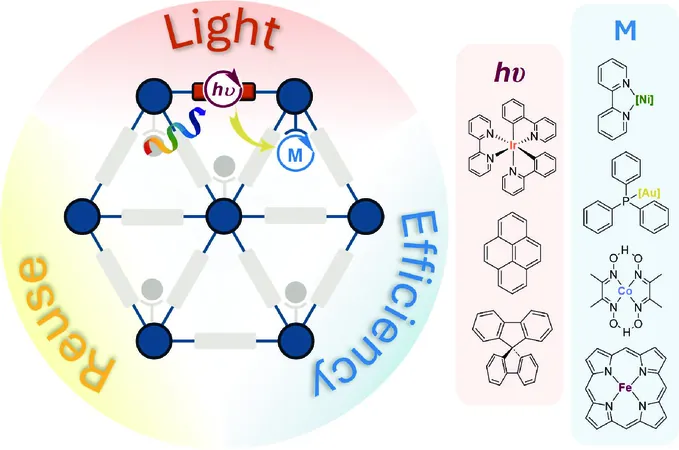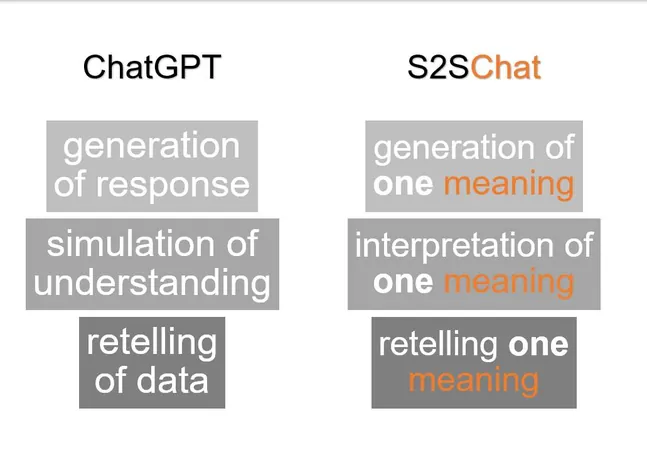
Revolutionizing Sustainable Chemistry: How Framework Materials Are Changing the Game in Photocatalysis
2024-09-28
Introduction
In the quest for sustainable chemistry, researchers are increasingly turning to innovative solutions that harness renewable energy for chemical reactions, minimize hazardous waste, and optimize atom economy. Inspired by nature's incredible processes, particularly photosynthesis—the method by which plants transform carbon dioxide and water into carbohydrates using sunlight—scientists are pushing the boundaries of artificial systems to achieve similar, if not better, results.
Challenges of Natural Photosynthesis
Despite nature’s efficiency, photosynthesis operates through a complex assembly of multiple enzymes and light-harvesting components, leading to suboptimal solar energy conversion rates. This conundrum has spurred scientists to develop artificial photocatalytic systems that can replicate and enhance these natural processes.
Advancements in Artificial Photocatalysis
A significant advancement in this field comes from researchers at the University of Chicago, under the direction of Prof. Wenbin Lin. Their groundbreaking work focuses on creating multifunctional framework materials—porous structures formed by a periodic bonding of metal and organic components—that can serve as highly effective catalysts in artificial photosynthesis.
Research Findings and Future Directions
In a recently published minireview in Carbon Future, the team shared their latest breakthroughs and laid out a roadmap for future advancements. Prof. Lin emphasized, "Nature performs precision chemistry to create complex molecules, often at the expense of efficiency. Our aim is to surpass this limitation with engineered systems that achieve greater efficacy."
Their research delves into how fine chemical modifications of these framework materials can be leveraged to optimize performance in reactions akin to photosynthesis. The scientists meticulously selected and verified essential elements such as photosensitizers, which absorb light (analogous to chlorophyll in plants), and catalysts that utilize this light energy to catalyze chemical reactions. The key to their success lies in the precise matching of energy and electron transfer kinetics within these materials.
Efficiency and Reusability of Framework Materials
"Incorporating the right combination of photosensitizers and catalysts into framework materials can boost their performance by over tenfold compared to simple mixtures in solution," explained Prof. Lin. This remarkable enhancement is attributed to a "pre-organization" effect that mimics natural systems, where strategic placement of photosensitizers and catalysts significantly accelerates chemical reactions.
Remarkably, these framework materials can be effortlessly recovered from reaction mixtures using simple techniques like centrifugation or filtration. This reusability ensures that the materials maintain their catalytic efficiency through numerous cycles. An impressive case study revealed that one framework material was successfully employed over eight cycles in the one-pot synthesis of a cardiotonic agent, showing no decline in catalytic performance.
Broader Implications and Future Applications
Prof. Lin expressed optimism about the broader implications of this research, stating, "This breakthrough has tremendous potential for the sustainable synthesis of pharmaceuticals and other high-value products, contributing to a greener future."
The team also aims to inspire other researchers to creatively design catalytic materials that can operate at the molecular level, applying the insights gained from their work across various applications. The first author of the study, Yingjie Fan (Ph.D. '24, currently a postdoctoral scholar at UC Berkeley), underscores that "the principles we've established can be extended to many other catalytic systems, paving the way for future enhancements in sustainable chemistry."
Conclusion
This innovative research not only shines a light on the capabilities of artificial photocatalytic systems but also provides hope for a sustainable future where complex chemical processes can be conducted efficiently and with minimal environmental impact. Stay tuned as this field continues to evolve, potentially leading to groundbreaking advancements in sustainability!




 Brasil (PT)
Brasil (PT)
 Canada (EN)
Canada (EN)
 Chile (ES)
Chile (ES)
 España (ES)
España (ES)
 France (FR)
France (FR)
 Hong Kong (EN)
Hong Kong (EN)
 Italia (IT)
Italia (IT)
 日本 (JA)
日本 (JA)
 Magyarország (HU)
Magyarország (HU)
 Norge (NO)
Norge (NO)
 Polska (PL)
Polska (PL)
 Schweiz (DE)
Schweiz (DE)
 Singapore (EN)
Singapore (EN)
 Sverige (SV)
Sverige (SV)
 Suomi (FI)
Suomi (FI)
 Türkiye (TR)
Türkiye (TR)